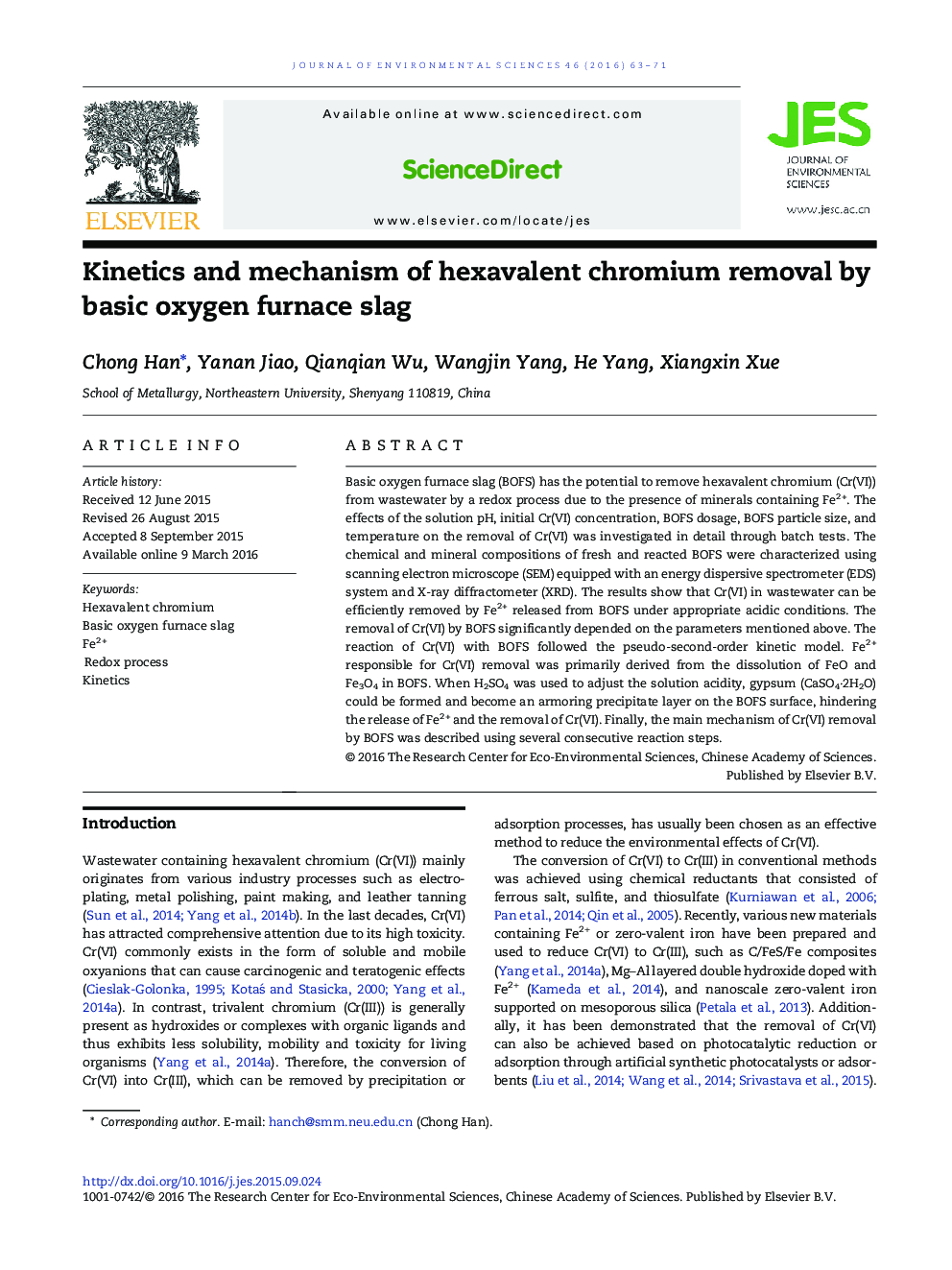| Article ID | Journal | Published Year | Pages | File Type |
|---|---|---|---|---|
| 4453627 | Journal of Environmental Sciences | 2016 | 9 Pages |
Basic oxygen furnace slag (BOFS) has the potential to remove hexavalent chromium (Cr(VI)) from wastewater by a redox process due to the presence of minerals containing Fe2 +. The effects of the solution pH, initial Cr(VI) concentration, BOFS dosage, BOFS particle size, and temperature on the removal of Cr(VI) was investigated in detail through batch tests. The chemical and mineral compositions of fresh and reacted BOFS were characterized using scanning electron microscope (SEM) equipped with an energy dispersive spectrometer (EDS) system and X-ray diffractometer (XRD). The results show that Cr(VI) in wastewater can be efficiently removed by Fe2 + released from BOFS under appropriate acidic conditions. The removal of Cr(VI) by BOFS significantly depended on the parameters mentioned above. The reaction of Cr(VI) with BOFS followed the pseudo-second-order kinetic model. Fe2 + responsible for Cr(VI) removal was primarily derived from the dissolution of FeO and Fe3O4 in BOFS. When H2SO4 was used to adjust the solution acidity, gypsum (CaSO4·2H2O) could be formed and become an armoring precipitate layer on the BOFS surface, hindering the release of Fe2 + and the removal of Cr(VI). Finally, the main mechanism of Cr(VI) removal by BOFS was described using several consecutive reaction steps.
Graphical abstractFigure optionsDownload full-size imageDownload as PowerPoint slide
